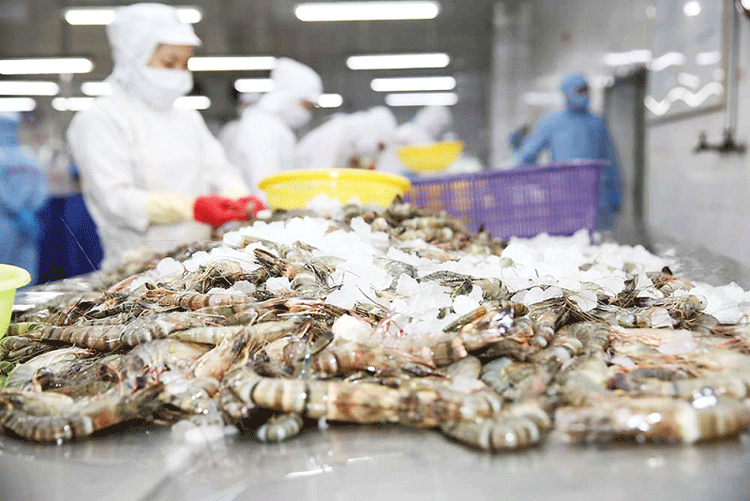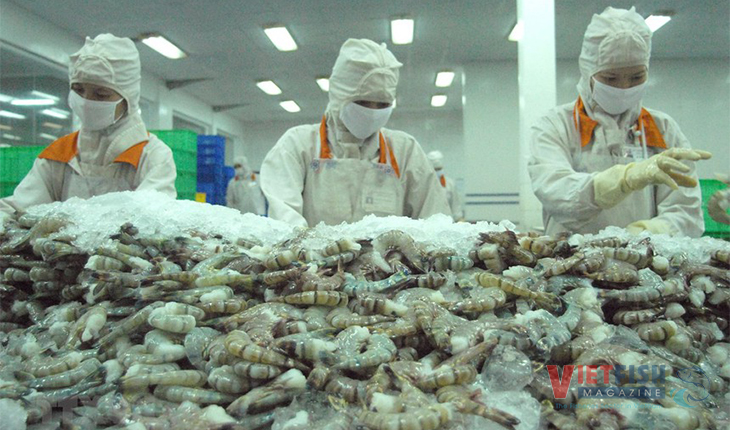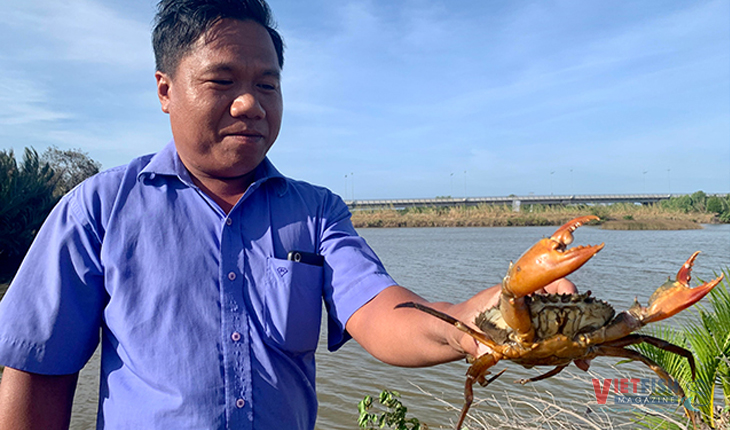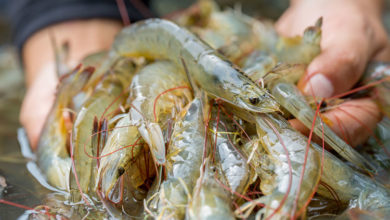Vietnam aims to sustainable seafood exports
In the face of the slump of seafood exports, businesses, especially the ones related to shrimp and pangasius, two key categories of the industry, should continue to be proactive in materials and reduce production costs so as to speed up from quarter III/2023 as expected.
According to the mid-July report about the leading organic shrimp exporting company of Vietnam, Camimex Group (CMX), the 2023 gross profit margin is forecasted to rise by 14.9% from 12.4%, spurred mainly by the fact that CMX could be self-sufficient in shrimp materials which are priced at 15-20% lower than the market price.
Self-sufficient in material, lower production cost
In terms of self-sufficiency in shrimp material, CMX sets a target of expanding the hi-tech organic shrimp farming area to 20,000 ha where the output can meet 20-30% of the company’s demand for shrimp materials by 2025.
Hi-tech shrimp farming will help quadruplicate the output as compared to the conventional method, moreover, the shrimp quality is improved, hence rising prices.
Meanwhile, Minh Phu Seafood Corporation can be self-sufficient in 10% of the material they need and 90% must be imported.
Minh Phu have always bought shrimp at high prices from farmers so that they have incentive to stock.
But if they keep doing that, their products cannot compete against Ecuador and India, thus they have to reduce the purchasing price this year. If Minh Phu buys shrimps at the global price, farmers must improve the farming process to increase their competitiveness.
Regarding the reduction of shrimp prices to compete against India and Ecuador amid the increasingly growing production costs on shrimp culture, Minh Phu’s leaders emphasized a strategic solution which involves taking advantage of Vietnamese indigenous shrimp unavailable in the rival countries; setting up in partnership with foreign companies to improve the quality of shrimp breeding stocks; producing SPR breeds; finalizing shrimp farming models, and rearing SPR shrims at a low density.
Balance market demand and supply
The pangasius sector is facing challenges, Deputy General Director of TG Fishery Holdings Corporation Ong Hàng Văn said. Vietnam’s target markets include the US, China, Asian countries, Comprehensive and Progressive Agreement for Trans-Pacific Partnership (CPTPP) countries reported a decline. Thus, Văn emphasized it was time for businesses to rebalance the market demand and supply.
There are segments for high-end products in China, the biggest market of Vietnamese pangasius. Actually, the North and South of China are easy, but it doesn’t mean that they accept disqualified products.
Văn is wondering about how to bring down the pangasius material prices to the previous year level, 1 USD/kg as it is fetching 1.2 USD/kg. It is expected that businesses can find a way in the second half of the year.
As production cost for pangasius culture has remained high amid the y-o-y drop of selling prices, not only will Vinh Hoan Corporation see lower competitiveness but its profit margin may reduce this year.
Meanwhile, in the face of difficulties in the main markets such as the US and the EU, Vinh Hoan plans to stop increasing the selling price and improve the product quality to enhance the competitiveness.
Vinh Hoan’s leaders anticipated that the low global demand for fish fillet and increasing feed (particularly soy and corn) recently will impact the corporation’s profit in 2023 – 2024.
Pangasius businesses need to propose the Ministry of Agriculture and Rural Development and the Ministry of Industry and Trade should work out a measure to bring down the pangasius feed price, Văn said. In his opinion, the pangasius feed price skyrocketed by 30% after the Covid-19, resulting in lower profit of the pangasius processing and farming sector.
VFM






